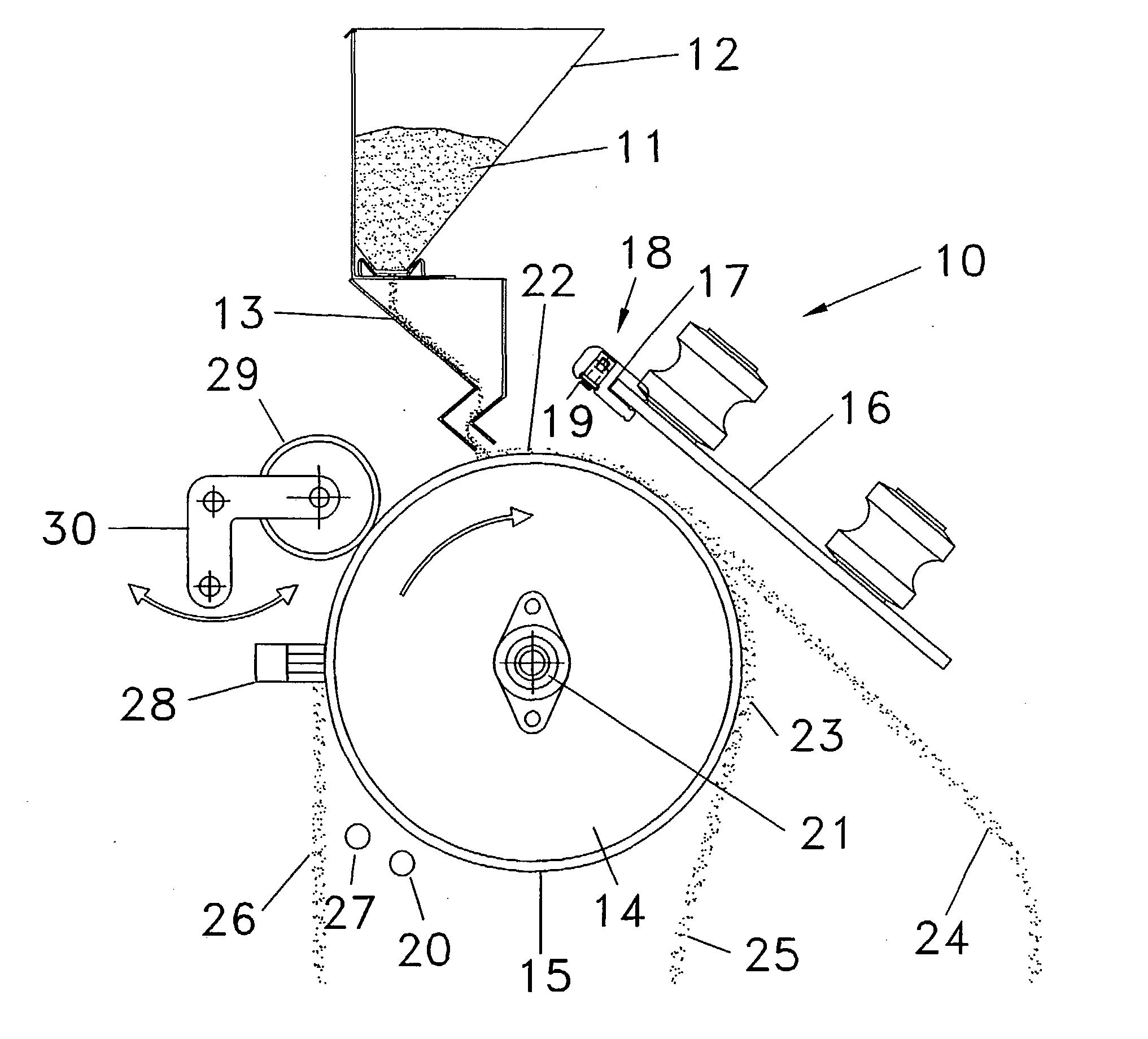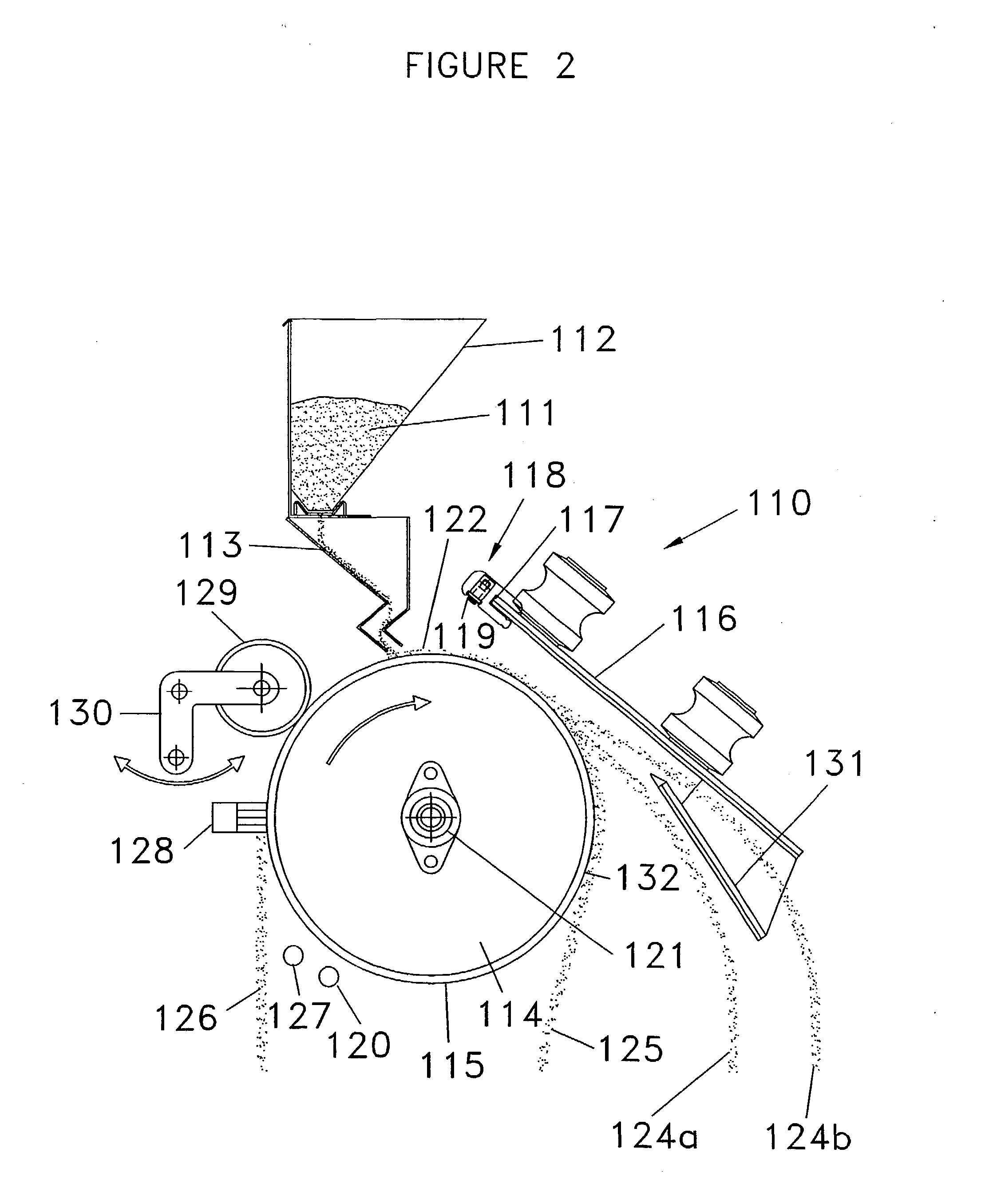Apparatus for the electrostatic separation of particulate mixtures
- Summary
- Abstract
- Description
- Claims
- Application Information
AI Technical Summary
Benefits of technology
Problems solved by technology
Method used
Image
Examples
Embodiment Construction
[0070] The apparatus 10, 110, 210, 310, 410 and 510 shown in FIGS. 1, 2, 3, 5, 6 and 8, respectively, is a particle separator used to separate particulate mixtures comprising species that exhibit difference in electrical conductivity. In particular, the apparatus serves to separate electrically conducting species from non-conducting species on the basis of their differing capacities to retain charge in a roll-type electrostatic separator. The devices are substantially similar and therefore the overall operation shall be described with reference to FIG. 1 only, and variations shall be described with reference to FIGS. 2 to 8. In view of the similarity of the devices, reference numerals in FIGS. 2 to 8 will be the same as those in FIG. 1 for similar features, except that the features will be numbered from 110, 210, 310, 410 and 510 in FIGS. 2, 3, 4, 5, 6 and 8, respectively.
[0071] Referring to FIG. 1, a mixture of particulate material 11 is contained within hopper 12 and fed via a fe...
PUM
 Login to View More
Login to View More Abstract
Description
Claims
Application Information
 Login to View More
Login to View More - R&D
- Intellectual Property
- Life Sciences
- Materials
- Tech Scout
- Unparalleled Data Quality
- Higher Quality Content
- 60% Fewer Hallucinations
Browse by: Latest US Patents, China's latest patents, Technical Efficacy Thesaurus, Application Domain, Technology Topic, Popular Technical Reports.
© 2025 PatSnap. All rights reserved.Legal|Privacy policy|Modern Slavery Act Transparency Statement|Sitemap|About US| Contact US: help@patsnap.com



